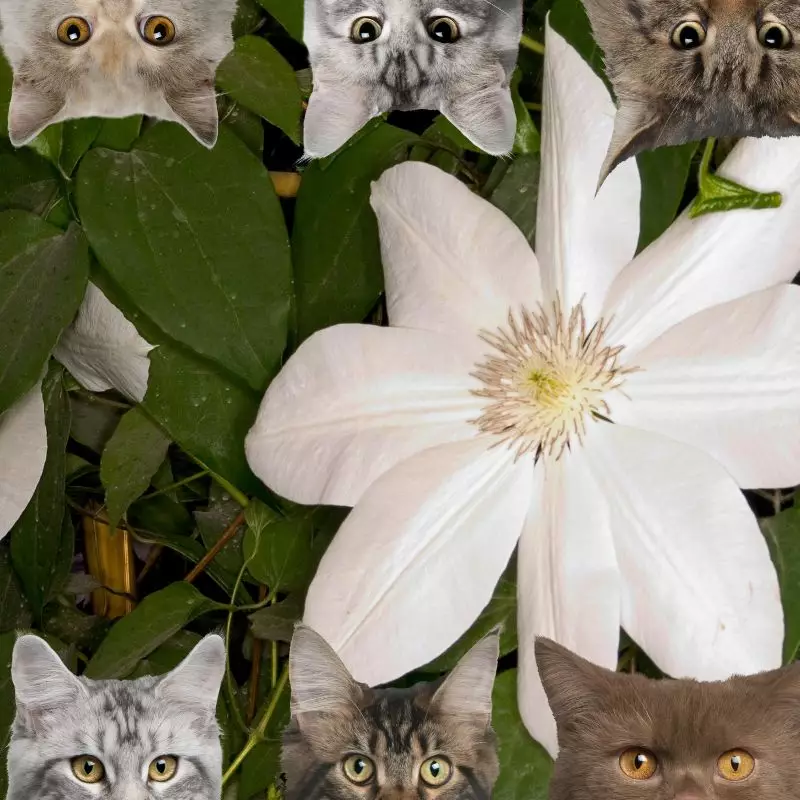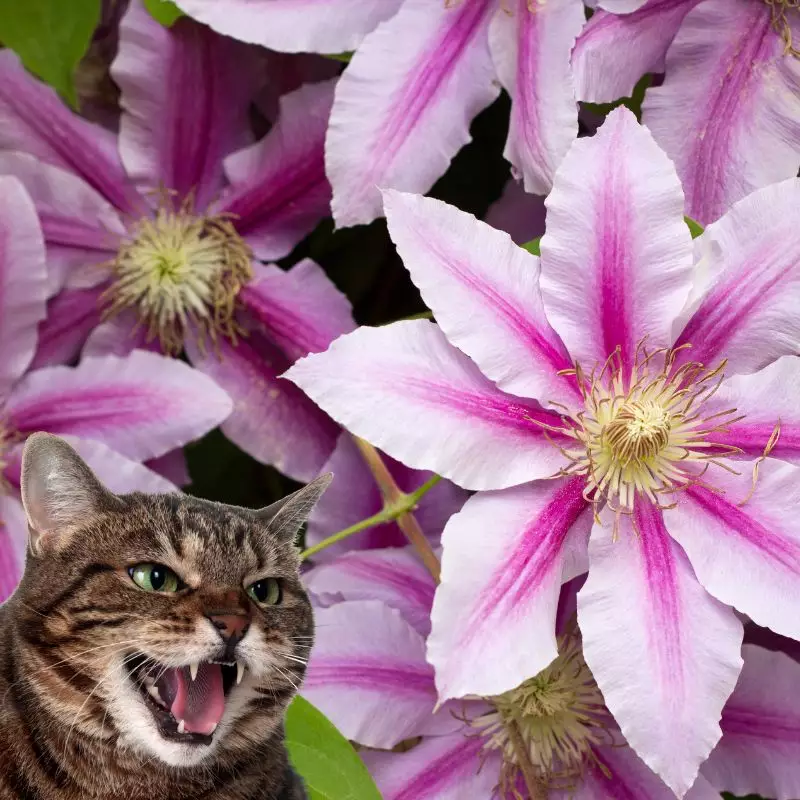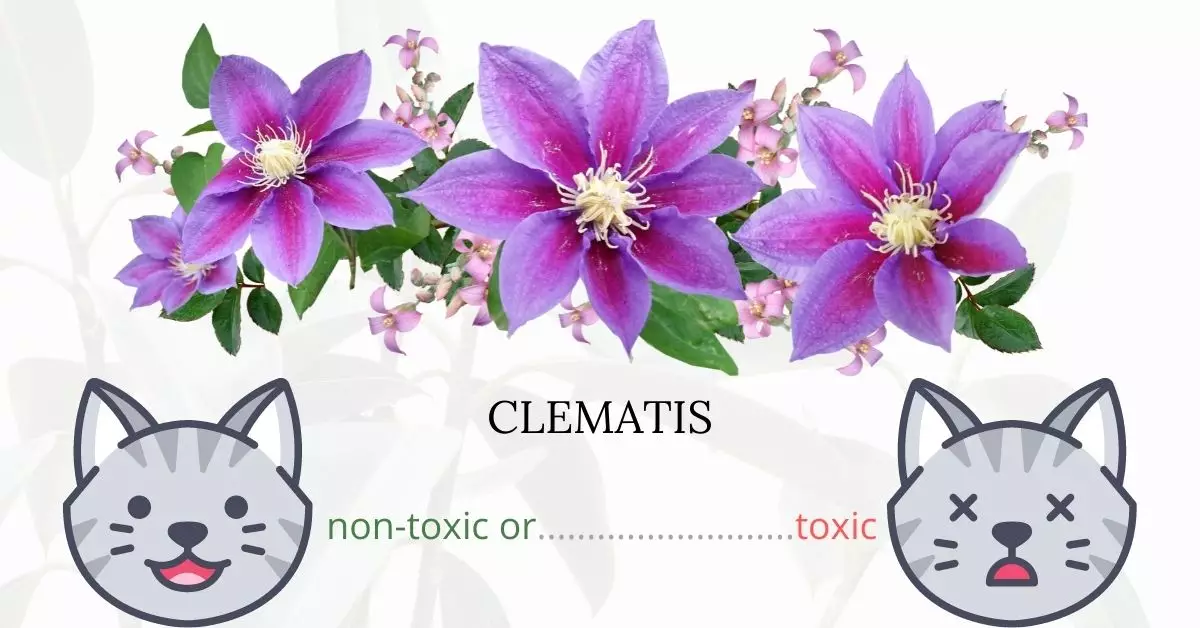Yes, Clematis, also known as Virgin’s Bower or Leatherflower, is toxic to cats. This flowering plant, popular among gardeners and plant enthusiasts, contains irritants called protoanemonin. When ingested, cats may experience irritation on their lips and mouth. In more severe cases, ingestion of large amounts can lead to cardiac symptoms.
This article is the result of a collaboration with a team of experienced DVMs (doctors of veterinary medicine). Through their insights and expertise, we provide accurate and up-to-date information on the potential risks Clematis poses to cats. To ensure the utmost accuracy, our findings are also backed by research from high-authority websites such as the ASPCA and PetMD.
Clinical Signs of Clematis or Leatherflower Poisoning in Cats

If a cat comes into contact with or ingests parts of the Clematis plant, various clinical signs may manifest due to the plant’s toxic components. Here’s a breakdown of each symptom and its potential cause:
- Hypersalivation: This is often a direct response to the irritation caused by the plant’s protoanemonin compounds. When a cat tastes or chews on the plant, the immediate oral discomfort leads to excessive drooling.
- Diarrhea & Vomiting: Ingesting Clematis can irritate the gastrointestinal tract. Diarrhea and vomiting are the body’s natural mechanisms to expel the harmful substances.
- Purging: Similar to diarrhea and vomiting, purging is the body’s attempt to rid itself of the toxins by expelling them quickly.
- Tingling of Mouth and Throat: The irritants in Clematis can lead to a numbing or tingling sensation in the cat’s mouth and throat, signaling immediate discomfort.
- Abdominal Pain: As the toxins move through the gastrointestinal tract, they can cause inflammation and pain.
- Bradycardia & Idioventricular Rhythm: These are heart-related symptoms where there’s a slowdown of the heart rate and an abnormal heart rhythm, respectively. These occur as the toxins affect the heart’s normal functioning.
- Cardiac Arrest & Asystole: In extreme cases, the cardiac effects of the toxins can lead to a complete cessation of heart activity.
- Increased Aggression & Delirium: The toxins can have neurological effects leading to behavioral changes like aggression and a state of intense excitement or delirium.
- Convulsions: Neurological disturbances from the toxins can also result in muscle spasms or seizures.
- Death: In severe cases, if the poisoning is not addressed promptly, the combined effects on the heart and nervous system can sadly lead to death.
It’s essential to consult a veterinarian immediately if your cat displays any of these symptoms after coming in contact with Clematis or Leatherflower.
First Aid and Treatment of Clematis or Leatherflower Poisoning in Cats

To ease your cat’s gastrointestinal upset, the veterinarian will most likely give him antacids as well as demulcents, such as glycerin, honey, pectin, or syrup, to cover and heal your cat’s weak stomach.
To get rid of the leftover plant parts in your cat’s stomach, your vet will have to make it puke. He might also wash out your cat’s stomach to remove any residual plant fragments. Your cat will be given activated charcoal when these procedures are completed. This binds to the poisons, preventing them from passing through your cat’s system.
If the cat develops cardiac symptoms, the vet may provide atropine intravenously to help stabilize its condition. Your cat’s kidney function will be also examined, and any potential cardiac arrhythmias will be watched as well. To relieve the burning and irritation caused by skin or mucus irritation, gently wash your cat’s skin and fur.
Recovery from Clematis or Leatherflower Poisoning in Cats

Once given proper and immediate treatment, your cat will be able to recover quickly and go back to his or her regular routines. Make sure to discuss post-treatment care with your veterinarian as necessary and follow them strictly.
Prevention of Clematis or Leatherflower Poisoning in Cats
The best prevention is to avoid growing clematis or leatherflower in your gardens or anywhere in the vicinity of your house that is accessible to your cats. Limit your cats’ activities outdoors and keep them busy and mentally stimulated inside your house.
If you love plants but have cats at home, check out these lists:





